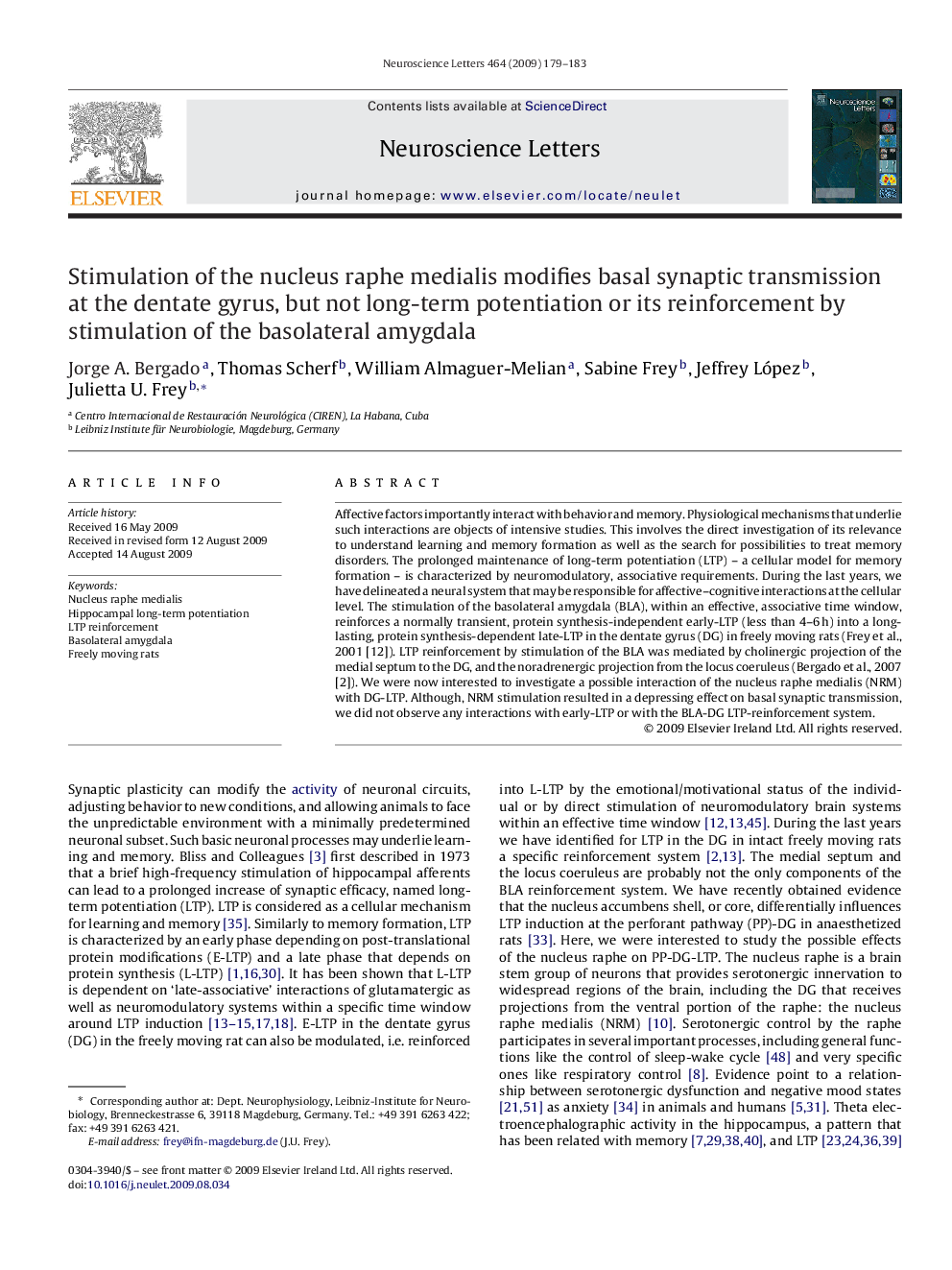| Article ID | Journal | Published Year | Pages | File Type |
|---|---|---|---|---|
| 4346947 | Neuroscience Letters | 2009 | 5 Pages |
Affective factors importantly interact with behavior and memory. Physiological mechanisms that underlie such interactions are objects of intensive studies. This involves the direct investigation of its relevance to understand learning and memory formation as well as the search for possibilities to treat memory disorders. The prolonged maintenance of long-term potentiation (LTP) – a cellular model for memory formation – is characterized by neuromodulatory, associative requirements. During the last years, we have delineated a neural system that may be responsible for affective–cognitive interactions at the cellular level. The stimulation of the basolateral amygdala (BLA), within an effective, associative time window, reinforces a normally transient, protein synthesis-independent early-LTP (less than 4–6 h) into a long-lasting, protein synthesis-dependent late-LTP in the dentate gyrus (DG) in freely moving rats (Frey et al., 2001 [12]). LTP reinforcement by stimulation of the BLA was mediated by cholinergic projection of the medial septum to the DG, and the noradrenergic projection from the locus coeruleus (Bergado et al., 2007 [2]). We were now interested to investigate a possible interaction of the nucleus raphe medialis (NRM) with DG-LTP. Although, NRM stimulation resulted in a depressing effect on basal synaptic transmission, we did not observe any interactions with early-LTP or with the BLA-DG LTP-reinforcement system.
